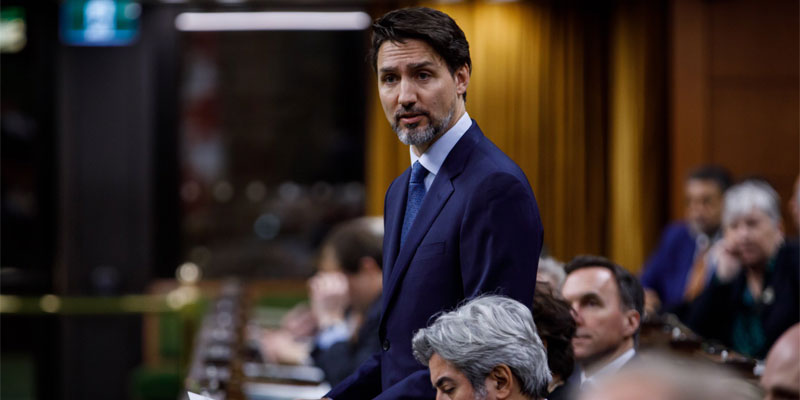Comparing pre-recession economic performance—Chrétien vs. Trudeau

The contrast between the current Trudeau Liberal government and its Liberal predecessor under Jean Chrétien could not be more stark. As the Trudeau government prepares its 2021 budget, which by all accounts will include massive new spending and transformative economic policies, Canadians should understand the difference in policy between these two Liberal governments.
For example, as noted in our new Fraser Institute study, the Chrétien government famously balanced the federal budget in 1997-98 due largely to spending cuts that saw federal spending (excluding interest costs) reduced by 9.7 per cent over two years. (If you adjust for inflation and population, the Chrétien government actually reduced per-person federal spending by 16.5 per cent.)
Once the budget was balanced, the Chrétien government imposed discipline, requiring at least a balanced budget each year, leading to a long string of surplus budgets that reduced the national debt. The balanced budget also allowed for important tax cuts, which made the country more attractive for domestic and foreign entrepreneurs, investors, businessowners and professionals.
Fast-forward to today’s Trudeau era. It's hard to understate the complete reversal of these successful policies. In the four years prior to the 2020 recession (in other words, pre-COVID), the Trudeau government increased federal spending (excluding interest costs) by 36.1 per cent, reaching $338.5 billion in 2019-20. All this new spending was financed by borrowing, with the four-year accumulated deficit reaching $91.3 billion. And Ottawa has increased taxes on workers, professionals, businesses and investors. Put simply, the Chrétien government oversaw a rationing of the federal government while the Trudeau government has overseen a marked expansion.
As such, it’s useful to compare the four-year performance (1997 to 2000 vs. 2016 to 2019) of the Canadian economy prior to the 2001 and 2020 recessions.
Per-person GDP, one of the broadest measures of income, increased by 3.7 per cent annually (on average) during the 1997-2000 period under the Chrétien government compared to 0.8 per cent under the Trudeau government (2016-2019). In other words, per-person GDP growth was 4.8 times greater during the Chrétien period than the Trudeau period. Similar results apply to total GDP or more narrow measures of income for households and individuals. The growth rates during the Chrétien years are markedly higher than those for Trudeau.
Canada’s unemployment rate remains the one measure of comparative strength for the Trudeau era, which averaged 6.2 per cent compared to 8.0 per cent during the Chrétien era. However, the Chrétien period enjoyed almost double the average rate of private-sector job creation (2.9 per cent) as Trudeau (1.5 per cent). How can you reconcile these two seemingly contradictory statistics?
The answer lies in how unemployment is measured—essentially, it’s the ratio of unemployed people (relative to the population) over 15 years of age who are either employed or unemployed. After peaking in 2003 at 67.6 per cent, the labour force participation rate fell to 65.7 per cent in 2019. Subsequently, there’s a smaller share of the population over the age of 15 active in Canada’s labour market.
So, had the Trudeau period maintained a similar average labour force participation rate as the 2005-2008 period just before the 2009 recession, an extra 448,000 to 576,000 workers would have been employed or looking for work. But again, the Trudeau period experienced comparatively weak growth in private-sector employment. Assuming that the larger number of workers did not affect private- and public-sector employment growth, the revised average unemployment rate for the Trudeau period would have been 8.5 per cent, higher than the Chrétien period’s rate.
Finally, the starkest difference between the two governments relates to business investment, the foundation for sustainable job creation and long-term prosperity. The average annual growth in total business investment during the Chrétien period was 7.5 per cent compared to an annual average decline of 0.2 per cent during the Trudeau period.
As most Canadians are aware, the residential housing sector has experienced a boom for years. If we exclude business investment in residential construction and focus more narrowly on investment in factories, plants, machinery and equipment, the difference is even larger. The average annual increase in this narrower measure of business investment was 9.3 per cent during the Chrétien years compared to a decline of 1.5 per cent during the Trudeau years.
While many factors affect economic performance, including factors within the control of governments (i.e. policy) and beyond government control, it’s fairly clear from the data that the economic performance of Canada was considerably weaker during the Trudeau years from 2016 to 2019 compared to the equivalent period under the Chrétien government (1997-2000).
As Canadians assess the Trudeau government’s upcoming budget, which promises substantially more of the same, it’s worth noting the marked differences in spending, taxes, borrowing and regulations—and economic performance—of these two periods in recent Canadian history.
Authors:
Subscribe to the Fraser Institute
Get the latest news from the Fraser Institute on the latest research studies, news and events.



